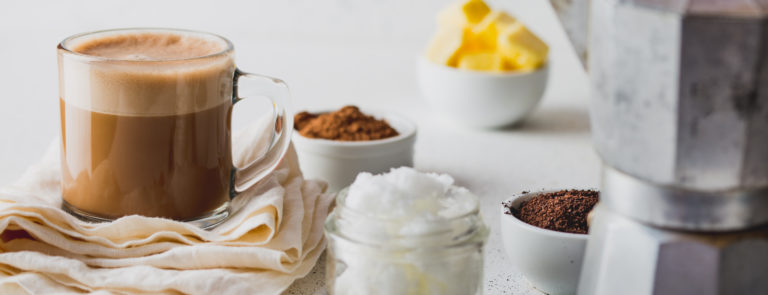10% off £35
Why do I have stomach cramps after eating?

We can all overindulge from time to time, causing ourselves discomfort and unwanted stomach ache. Usually, it’s nothing to worry about and can be simple to address. To put your mind at rest, we have put together the following article that will go through stomach cramps, what causes them and how you can avoid them in the future.
What are stomach cramps?
It can be really worrying if you get stomach pains after eating. Stomach ache, stomach cramps, tummy ache or tummy cramps often refer to the same thing. It’s the dull ache you feel in your stomach or abdomen.1
Ordinarily they are short-lived and soon disappear. Although, in more severe circumstances, if your pain starts suddenly and unexpectedly It may be more cause for concern.2
According to the NHS there are four common stomach cramp causes. They are3:
| Common cause | Type of stomach ache |
|---|---|
| Trapped wind | Feeling bloated and farting a lot |
| Indigestion | Feeling full and bloated after eating, heartburn, feeling sick |
| Constipation | Struggling to go to the toilet |
| Diarrhoea / food poisoning | Watery poo, nausea, vomiting |
It's advised that you should see your GP if:
- If the pain quickly gets worse
- If pain or bloating will not go away or keeps coming back
- If you have stomach pain and problems with swallowing food
- If you lose weight without trying to
- If you suddenly pee more often or less often
- Peeing becomes suddenly painful
- You bleed from your bottom or vagina, or have abnormal discharge from your vagina
- Your diarrhoea does not go away after a few days
Summary
- Stomach cramps, or stomach ache as it perhaps more commonly known is a pain you feel in stomach or abdomen
- Often they are nothing to worry about, but in severe circumstances they can be cause for concern
What is tummy ache?
As covered above, tummy ache is a general term for stomach or tummy cramps that can occur for a number of reasons. Commonly they are short-lived but can be more concerning if they last for a long time.
What causes your cramps?
If your cramps are occurring after eating, they’re most likely related to your digestive system. Helpfully, this narrows down the list of possible causes.
First, you should consider the most common reasons that might be causing your discomfort.
-
Too much food
If you experience stomach cramps after meals, assess your portion size. If accompanied by bloating or a feeling of fullness - the cramp-like discomfort could be caused by eating too much at once – therefore over-filling your stomach.
Why does my stomach hurt after I eat?
Portion sizes are often much smaller than you’d think. With some foods, it’s easy to consume double or even triple the recommended amount. This counts with healthy foods, too.
For example, half a pepper, half an avocado, one tablespoon of raisins and one slice of pineapple each constitute a whole portion of fruit or vegetables.
- 1 portion rice, pasta or noodles = 6 tablespoons (cooked)
- 1 portion cheese = 30g, or the size of a box of regular matches (not giant BBQ matches!)
- 1 portion meat = 90g, or the size of a deck of cards
- 1 portion fruit juice or fruit smoothie = 150ml, or a small tumbler glassful4
-
The type of food
If you only experience stomach cramps after eating sometimes, they could be linked to the type of food you ate on that occasion.
Does spicy food cause stomach pain?
Spicy food may cause stomach pain. For instance, stomach cramps after a hot curry are incredibly common. Spicy food gets its kick from the compound capsaicin, found in chilli peppers. For people with a sensitive stomach, capsaicin can cause pain and discomfort by irritating the lining of the gut.5
A 2008 study by Imperial College London found that people with irritable bowel syndrome (IBS) have a higher than usual number of chili pepper pain receptors, which is why some people's IBS symptoms worsen after eating spicy food.6
Fatty foods might also be the culprit. Compared to protein and carbohydrates, fat is digested slowly. This means it spends more time in the stomach - and can lead to indigestion. So, if stomach cramps after eating are accompanies by nausea, heartburn, and a nasty taste in the back of your throat – a fatty meal might be to blame.7
Adding lots of fibre to your diet if you don’t usually eat much fibre can also cause temporary gastro-intestinal symptoms such as diarrhoea, bloating and cramping.
According to the NHS, acidic foods such as tomatoes, citrus fruits, salad dressings and fizzy drinks can also trigger gut symptoms in some people.8
-
Trapped wind
Trapped wind is a common cause of stomach cramps after eating and can be seriously uncomfortable or even painful.
What if it’s a sharp pain in the stomach after eating?
Eating too quickly leads to trapped wind, as we swallow air along with mouthfuls of food.. Remember - chewing is the first step in the digestive process, so chew each mouthful properly otherwise it may also lead to indigestion.
The correct number of chews is different for everyone, but some studies have indicated a positive effect on appetite and digestion with 40 chews per mouthful.9
Stomach pain after drinking
Do you sip a fizzy drink with a meal?
Fizzy drinks are carbonated, which means they contain hundreds of tiny air bubbles. You swallow these air bubbles, which can become temporarily trapped in your digestive tract, causing stomach cramps after meals.
Other causes may include...
- Stomach ulcers – these are sores which can develop on the stomach lining, which are made worse by eating certain foods. Abdominal pain is usually the main symptom. See your GP as stomach ulcers require treatment.
- Irritable bowel syndrome (IBS) – a common condition which affects digestion. Adjusting your diet can help.
- Food intolerance – whether it’s lactose, gluten, fructose or sulphites, an undiagnosed food intolerance could cause stomach cramps after meals. Try keeping a food diary to monitor your symptoms and identify a pattern.
Summary
- It’s worth considering what you are eating and how much you eat in order to establish what is causing your stomach cramps.
What are abdominal muscle spasms?
In more serious cases, uncontrolled and sometimes painful muscle movements, or spasms in the stomach are known by the NHS as dystonia.
Dystonia symptoms include10:
- Uncontrollable muscle cramps and spasms
- Parts of your body twisting into unusual positions – such as your neck twisting or your feet turning inwards
- Shaking or tremors
- Uncontrolled blinking
Dystonia is not common, however, in rare cases it can lifelong condition that affects people in different ways. You can get help and advice about dystonia from your GP or the UK’s Dystonia Society.
A summary of stomach pain after eating
There are many reasons why you might experience stomach pains after eating. It’s likely that it isn’t anything serious and it can be easily treated.
It’s worth considering portion control and your food choices. However, if the problems persist it might be worth consulting your GP.
Last updated: 27 April 2021
- https://www.nhsinform.scot/illnesses-and-conditions/stomach-liver-and-gastrointestinal-tract/stomach-ache-and-abdominal-pain
- https://www.nhsinform.scot/illnesses-and-conditions/stomach-liver-and-gastrointestinal-tract/stomach-ache-and-abdominal-pain
- https://www.nhs.uk/conditions/stomach-ache/
- https://www.bupa.co.uk/health-information/nutrition-diet/portion-size
- https://www.sciencedirect.com/topics/chemistry/capsaicin
- https://gut.bmj.com/content/57/7/923
- https://www.nhs.uk/live-well/eat-well/good-foods-to-help-your-digestion/
- https://www.nhs.uk/live-well/eat-well/good-foods-to-help-your-digestion/
- https://www.sciencedirect.com/science/article/pii/S0031938415300317
- https://www.nhs.uk/conditions/dystonia/














